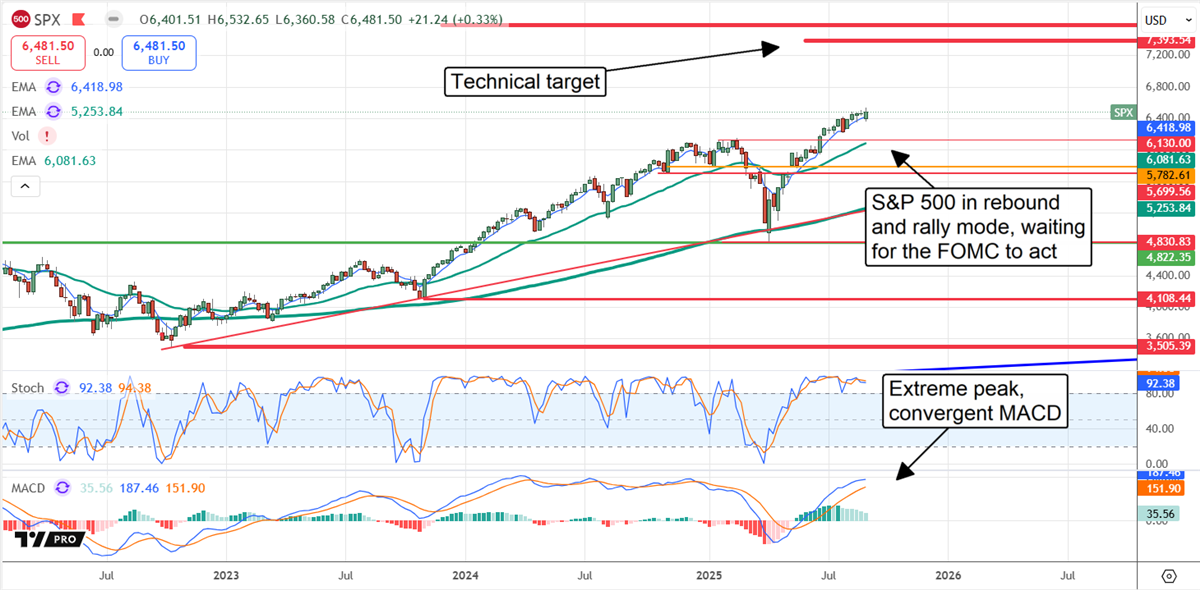Hi there, Thank you for subscribing to MarketBeat Daily Ratings. We're excited to have you onboard! Every weekday, you’ll get a curated summary of new “Buy” and “Sell” ratings from Wall Street’s top-rated analysts, the latest stock news, and bonus investing content—all delivered straight to your inbox. Please take a moment to confirm your subscription by clicking the link below. You may not receive your daily ratings newsletter without confirming your subscription. Click Here to Confirm Your Subscription to MarketBeat Daily Ratings Thank you again for subscribing. We look forward to being an important part of your investing journey.

Matthew Paulson
Founder and CEO, MarketBeat.
Confirm Your Subscription to MarketBeat Daily Ratings Here
Monday's Bonus Content What August Labor Data Means for the S&P 500 in SeptemberWritten by Thomas Hughes. Published 9/8/2025. 
Key Points - Labor markets are cooling, but any data should be taken with caution; cooling and weak aren't the same thing.
- 2025's labor market is cooler than the post-pandemic peak but still strong relative to historical trends.
- The FOMC can provide a catalyst to boost business, labor market, and consumer sentiment, but there is risk.
The August labor data supports a bullish outlook for the S&P 500 (NYSEARCA: SPY) this September. While risks and uncertainties persist, the labor market deterioration isn't as severe as some headlines imply. The critical metrics—JOLTs and nonfarm payroll (NFP) job creation figures—align more with a normalization following the COVID-19 pandemic than with a broad market meltdown. Jeff has identified five of the past seven number-one performing tech stocks — before they took off. His Tesla call alone could have made readers 21 TIMES THEIR MONEY, if they listened to his recommendation. Don't miss his next big prediction. Click here now to see how AI is coming to life. The JOLTs figure of 7.2 million is down an alarming 41% from its early 2022 peak. Yet it remains above its August 2019 level—and above the year-end 2019 level, when the labor market was strong and the S&P 500 was on track for record highs. Similarly, the Challenger Report on layoffs showed a rise to an 18-month high in August 2025, but that figure sits well within the three-year range and is one of more than a dozen such spikes since mid-2022. Labor Market Is in Wait-and-See Mode; FOMC Could Be the Catalyst Although Challenger hires are running near long-term lows and the NFP gain was modest, job openings remain plentiful. In August, NFP growth was weak but still positive, suggesting a market holding its breath for a catalyst. The Federal Open Market Committee may provide that spark. Labor markets are "slowing" from previously high levels and wage inflation is decelerating—presenting a Goldilocks scenario for rate cuts. According to the CME FedWatch Tool, there is now a 100% probability of a 25-basis-point cut in September, with two more cuts priced in by year's end. Such easing should boost market sentiment, unlock capital, and create tailwinds and positive economic feedback loops. A permanent reversal of some Trump-era tariffs would further strengthen this effect. The Outlook for Retail Spending Is Too Pessimistic Forecasts predicting a 5% drop in holiday consumer spending appear overly gloomy when weighed against recent labor and retail sales data—and anticipated rate cuts. In July, consumer retail spending rose 0.5% month-over-month and nearly 4% year-over-year, outpacing both consensus estimates and inflation. This resilience amid tariff headwinds likely extends to August's retail data, due mid-September just before the FOMC meets. Consensus expectations for S&P 500 earnings may also be too low. Historically, the index outperforms its own estimates by several hundred basis points each quarter. With recent earnings beats, Q3—and likely Q4—results should exceed forecasts, driven by strength in Consumer Discretionary (NYSEARCA: XLY) and Consumer Staples (NYSEARCA: XLP). The Fed's Biggest Risk Remains Inflation A key risk for the FOMC is the August Consumer Price Index, which is expected to show a headline uptick and a core rate steady at 3.1%—well above the Fed's target but potentially low enough to justify a 25-basis-point cut. However, if CPI surprises to the upside, it could derail the easing path and raise recession fears. Looking at the S&P 500 chart, the broad market index is in rebound mode as of early September and appears set to move higher. Both the MACD and stochastic indicators signal strength, suggesting this rally could extend through year-end and beyond, with a target above 7,200. 
|